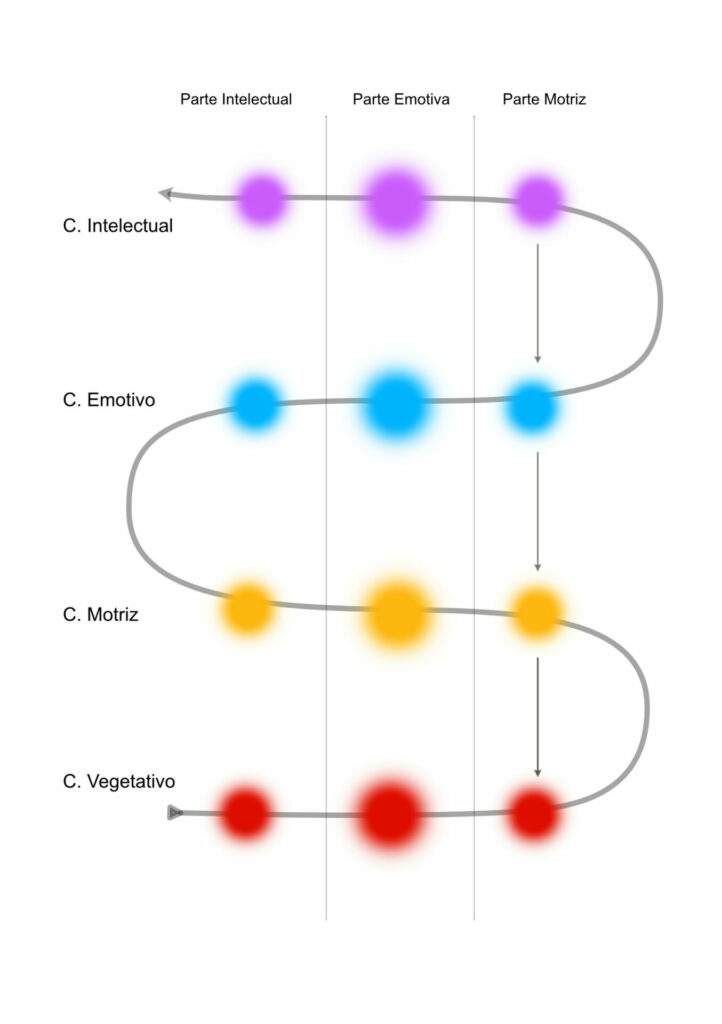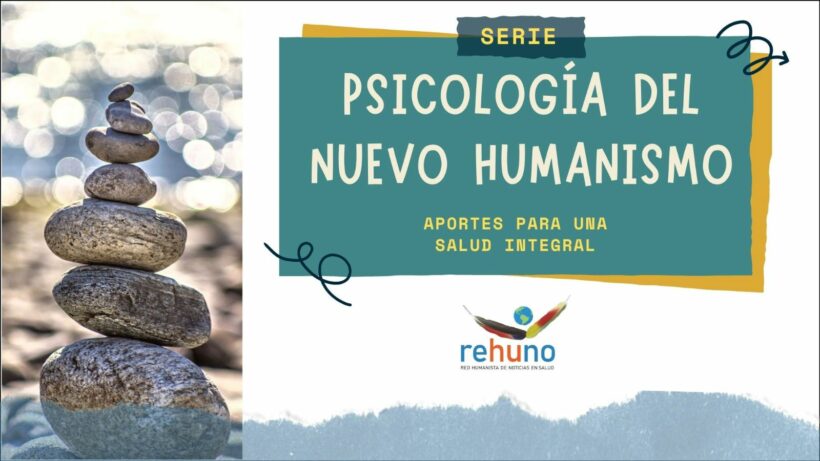From the Humanist Health News Network REHUNO Health we set up a place of exchange where we find a new look at everyday life based on an experiential and existential psychology (the Psychology of New Humanism), and which gives concrete proposals for personal work to reach a full meaning of our existence and a life free of unnecessary suffering. It is not, therefore, a therapeutic psychology or one that deals with any pathology, but is aimed at anyone who wants to understand themselves and have the tools, if they so wish, to initiate a positive change in their lives. Psychological wellbeing is undoubtedly one of the foundations of integral health, which is why it is an aspect that needs to be addressed. We invite you to put these proposals into practice and also to contact us and tell us about your experience. Write to us!
By Jordi Jiménez
In the human being there are a series of control points from which we can give responses to the external and internal world. We will call these points “response centres”. We will distinguish the following: vegetative centre, motor centre, emotional centre and intellectual centre. Each of these centres specialises in a particular type of response. For example, the vegetative centre regulates biological mechanisms, so its responses are mainly directed to the its interior; the motor centre is in charge of body movements, of mobility; the emotional centre regulates feelings and emotions as responses to internal and external phenomena; and the intellectual centre regulates the elaboration of thoughtful responses, the relationship between different stimuli, the relationship of data and learning, as explained in the book Self-Liberation.
From a physiological point of view, these centres can be widely distributed and far apart in the body. For example, motor activity is distributed almost everywhere in the body, in the striated muscular system. However, from an experiential perspective, this physiologically distributed activity can be grouped into a single centre which we call the motor centre, since its register is that of the body’s mobility.
Energetic register of activity
From the same point of view, that of the internal register, it could be said that all this activity is experienced as a psychophysical type of energy. From a physiological perspective it is electrochemical impulses, endocrine substances, etc., but we focus on the experiential register of that activity and that register is energetic. Any of us can notice that there are days when we have more energy than others. There are times when we are very active and others when we need to rest, which is experienced as different levels of energy in the response centres and in activity in general. There are also days when we are more “emotional” and other days when we are more “moving”, for example. This also shows different energy levels in the different response centres, which can also cycle over time.
Spatial location of the centres
We can therefore speak of an energetic circuit through which impulses and responses circulate. The response centres have a specific order and spatial location: the lowest centre is the vegetative centre. The next is the motor centre, the highest is the emotional centre and finally the highest is the intellectual centre. The spatial location of these centres is also determined by the place where the register of the activity of each centre is given, which coincides with the order in which the energy circulates. The intellectual register is usually had in the head, the emotional in the heart and the motor in the abdomen. The vegetative centre usually has a more diffuse register and is spread throughout the body, although one of its parts, the vegetative-sexual centre, is registered in the lower part of the trunk, which corresponds to the sexual organs.
On the other hand, the speed of response of the centres is inversely proportional to their complexity. The vegetative centre has the fastest and most immediate response (more reflexive, therefore simpler) and the intellectual centre has the slowest response (more delayed, more complex).
Sequence of energy circulation
As we have said, energy circulates following a certain order, a certain sequence, and this is always from the bottom to the top, but not the other way around. That is to say, from the vegetative, the energy rises towards the motor, the emotional and finally the intellectual. This means that it is the vegetative system that generates and distributes the energy through the rest of the circuit, circulating it upwards, which has different implications. For example, by starting an activity in the motor centre, we can make the energy rise to the rest of the higher centres: the emotional and the intellectual, but we will observe that the vegetative (which is below) loses energy. Also in a positive emotional situation, for example with a partner, we notice that our thoughts become clearer and softer, but we don’t feel like going for a run (the motor centre loses energy).
However, if I think from the intellect that I should feel this or that, nothing will happen. Or I think that I am going to go for a run and, as usual, nothing happens and I stay at home. From a higher centre like the intellect there is no energy circulating to the centres below, as we have said and as we can see for ourselves. Of course, no matter how much I think about lowering my blood pressure (vegetative centre), it will not go down at all. The vegetative centre is totally immune and indifferent to our thoughts. Energy does not circulate downwards.
Circuit of the response centres

Image: schematic of the response centres
But there is an exception to this mechanism of upward circulation of energy. The centres can be divided into three parts: the intellectual part, the emotional part and the motor part. For example, in the intellectual centre, its intellectual part works with abstractions; its emotive part works with intellectual habits (tastes, curiosity); and its motor part works with images. In the emotive centre, its intellectual part works with intuitions; its emotive part with emotive habits; and its motor part with passions. Well, the motor part of the centres can indeed bring energy down from the top to the bottom. A clear example was the one we gave in previous articles: images. Imagining a situation clearly, getting well into it, produces emotions, produces movement in the body and can produce vegetative alterations (as in the case of retching).
However, I can also visualise something and feel nothing and not even a muscle move, this circuit can move energy downwards or not, depending on the intensity of the image. Some believe that just by visualising something, changes of all kinds, even bodily, are produced, but this only happens when these images are “lived” or experienced in profundity, with charge. For example, if you vividly visualise the death of a loved one, you may feel all sorts of things, even start to feel physically ill (nausea, dizziness…), but if you visualise your blood pressure dropping, nothing will happen, it will only drop a little if I relax my body and relax well, i.e. by the action of the body, not of an image. In fact, it is the emotional charges that produce changes in the body and not so much the images themselves.
Interrelation of the centres
Anyway, things are not so separate from each other, we explain them like this to make it easier to understand, but everything is very much interconnected with everything and this is of great importance. For example, if one of the centres is using a lot of energy, the others tend to lower their activity due to lack of energy. If I am ill, the vegetative centre is taking as much energy as possible to try to repair the imbalance and the rest of the centres are working at a minimum: I have no energy to move, my emotions are neutral, sluggish, and I can’t think clearly either. If, on the other hand, I am doing intense intellectual activity, my motor and vegetative systems are working at a minimum (I can go for hours without eating or moving).
I can also observe that if I have a lot of pleasure in this intellectual activity (positive emotional energy) it is easier for me to stay in it than if I feel disgusted or rather rejection emotions. This shows that the centres work in interrelation.
In a future article, we will talk about registers that occur when the energy of all centres goes in the same direction and when the directions of that energy are divergent.
If you want to discuss the subject you can write to us right here.






